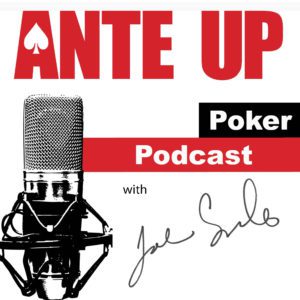Part I: The New “Bad Beat”
Every poker player knows the sting of a one-outer. You make the right call, the odds are in your favor, and still—boom—the river card sends the pot sliding across the felt. That’s poker. But in 2025, there’s a far more devastating version of the bad beat, one that doesn’t happen at the table at all.
It happens online, when a player wins big—maybe a $5,000 score or a monster run on the blackjack tables—only to have their account frozen by an obscure clause buried in the casino’s Terms & Conditions. Suddenly, the victory vanishes, replaced by emails demanding government IDs, selfies with passports, and even “proof of source of funds.”
Players call it the Ambush KYC, and it’s become the digital equivalent of getting stacked by a one-outer. The difference is, this beat isn’t about variance. It’s about design.
The Rise of Ambush KYC
“Know Your Customer” (KYC) checks were once straightforward: before you played, you verified your identity. Annoying, yes, but predictable. The new model is different. Many offshore casinos now advertise themselves as “No-KYC” to lure crypto-savvy players who prize speed and privacy.
The trap is sprung later—specifically when you try to withdraw. At that moment, the casino demands a full KYC process, often with moving goalposts: rejected documents, endless “compliance reviews,” and vague accusations of “suspicious activity.”
Common triggers are:
- First withdrawals
- Payout requests over $1,000–$2,000
- Cumulative deposits reaching an internal threshold (usually $2,000-)
The result? Winning players face delays or outright confiscation, while losing players enjoy the promised “frictionless” experience.
This bait-and-switch is not just predatory—it’s systemic. It’s born from a conflict between marketing and regulation. Offshore casinos must promise privacy to attract players but face global AML (Anti-Money Laundering) pressure to conduct identity checks. The compromise? Ambush KYC. Market “No Verification” up front, enforce checks only when paying out.
For players, this creates an environment where skill at the table is irrelevant if you can’t cash out.
The Fine Print as a Weapon
The real machinery of Ambush KYC is buried in the Terms & Conditions. Look closely and you’ll see phrases like:
- “At our sole discretion”
- “We reserve the right to void winnings”
- “Terms may be amended without notice”
These clauses are not legal filler. They are operational tools, giving casinos carte blanche to delay or deny withdrawals. One UK court has even ruled such clauses can be “legally worthless” if too obscure or one-sided, but for most offshore players, no regulator will intervene.
In practice, this transforms the T&Cs from a mutual agreement into a weaponized risk transfer document. The casino moves its regulatory risk, tech failures, or financial exposure directly onto you.
In poker terms: you’re not playing a fair game. The dealer can change the rules mid-hand.
Part II: Applying a Gambler’s Mindset to Platform Selection
Poker players pride themselves on analysis. They study ranges, calculate EV, and look for tiny tells. Yet many fail to apply the same rigor to casino selection. That’s the real blind spot—and where the edge can be found.
The solution is a data-driven framework for evaluating platforms, much like evaluating hands. That’s what VPNCasinos.io provides with its Anonymity Grade system, a methodology that quantifies platform risk across three pillars.
Pillar 1: VPN Access (40%)
For traveling players or anyone outside “approved” regions, VPN use is essential. But not all casinos treat VPNs equally.
- VPN-Friendly: Explicitly permitted. Safe.
- VPN-Restricted: Explicitly banned. High risk—use one and you forfeit funds.
- VPN-Tolerated: Silent or ambiguous. Most casinos that are okay with their players using VPNs usually stay silent about it and don’t mention VPNs in their terms.
For players who regularly travel for tournaments or live in restricted regions, this pillar is as important as knowing stack depths at the table. Ambiguity is the enemy.
Pillar 2: KYC Policy (40%)
This is the most critical factor: how likely is the casino to hit you with Ambush KYC? The spectrum looks like this:
- Truly No-KYC: No checks, ever. Maximum privacy, but often unlicensed.
- Light KYC: Triggered only above clear thresholds (e.g., $3,000). Transparent, predictable.
- Standard KYC: Upfront checks required for all withdrawals. Annoying, but honest.
- Ambush KYC: Marketed as “No-KYC,” enforced only when you try to cash out. Predatory.
Knowing the threshold is bankroll management. Just as you size your bets based on stack and blinds, you should size your withdrawals based on the platform’s policy.
Pillar 3: AML & T&C Transparency (20%)
Finally, there’s the language of the house rules themselves. Transparent casinos outline clear AML policies and define suspicious activity precisely. Predatory ones use vague, sweeping terms.
Think of it as the difference between a rulebook and a blank check. Would you sit down in a game where the dealer can retroactively decide which hands count? Neither should you deposit on a site with “sole discretion” clauses scattered through its T&Cs.
The Anonymity Grade Matrix
These three pillars are weighted into a single score by VPNCasinos, producing an Anonymity Grade that reflects real-world player risk.
Part III: Case Studies & The Path Forward
To see how this plays out, let’s look at two hypothetical players.
Player A: The Casual
“Alex” signs up for a slick-looking casino promising “No Verification & Instant Crypto Withdrawals.” They run $500 into $2,500. At cashout, they get the dreaded email: “Your account has been flagged for a compliance review.”
The site demands a driver’s license, utility bill, and a selfie. The docs are “rejected” repeatedly, support drags its feet, and Alex’s funds remain frozen. This is the Ambush KYC in action.
Player B: The Pro
“Maria,” a poker pro, knows better. She consults VPNCasinos, finds a 4-star “Light KYC” site, and notes the $10,000 threshold. She runs up $15,000 and structures her withdrawals accordingly: $9,500 first, then a second $5,500 payout. The first clears instantly; the second triggers standard KYC, but she knew it was coming. Predictable, transparent, and manageable.
The difference? One player is blindsided. The other treats the casino like a game to be studied and beat.
Real-World Precedent
In February 2025, a player at Shuffle Casino had $20,000 frozen under a “multi-accounting” violation that had supposedly occurred months earlier. The violation had already been penalized, but the casino held it in reserve until the player attempted a large withdrawal.
This retroactive enforcement highlights the fundamental danger: casinos can hold pretexts in their back pocket, waiting until it serves their bottom line.
Conclusion: The New Player’s Edge
In 2025, the biggest edge isn’t spotting a twitchy eye at the table—it’s spotting the hidden traps in a casino’s fine print. Ambush KYC, vague AML policies, and predatory T&Cs are the new one-outers, and they can wipe out months of skill and discipline in a single blow.
The solution is not hope, but preparation. Just as pros study ranges and ICM, they must now study platforms. Tools like VPNCasinos turn opaque risks into quantifiable data, transforming post-mortem complaints into proactive defense.
Serious players already know: the game doesn’t end when the cards are mucked. In today’s online landscape, the real pros are those who master both the felt and the platform. Anything less is leaving money—and your edge—on the table.




